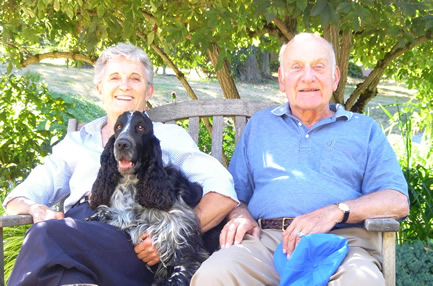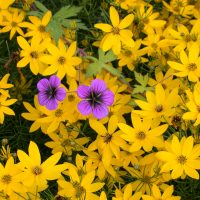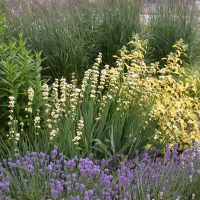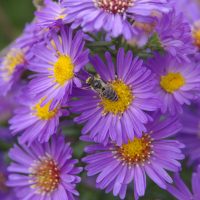The Soest Herbaceous Display Garden opened to the public in 1998 thanks to the generosity of Orin and Althea Soest. The garden was created to help local gardeners select plants appropriate to a variety of site conditions commonly found in Pacific Northwest urban gardens. This garden features over 280 kinds of herbaceous (non-woody) plants that include perennials, annuals, and bulbs.
The garden demonstrates how soil and light affect plant growth and health. The eight raised beds consist of either a sandy loam or a clay loam soil texture representative of common urban soils. The use of small trees in beds demonstrates how certain plants perform in partial shade versus full sun. Irrigation is applied using “water-wise” techniques to avoid wasteful runoff and evaporation. At the University of Washington Botanic Gardens (UWBG), we consistently evaluate plant performance. Cultivars that are too aggressive here are replaced by others that will grow in the Soest Garden.

Garden construction and maintenance funded through the generosity of longtime supporters of horticulture, Orin & Althea Soest. Plants donated by Molbak’s and T & L Nursery. The original garden design was by Michaela Groeblacher.

Soest Flowers on Pinterest
Horticulturalist, JP Sauerlender, has created Pinterest boards with the same plants that grow in each Soest Garden bed. Note: the photos in Pinterest are not of the actual plants growing in the Soest Garden.
- Bed 1 – part shade, CLAY loam, limited irrigation
- Bed 2 – Part Shade, SANDY loam, regular irrigation
- Bed 3 – part shade, CLAY loam, regular irrigation
- Bed 4 – full sun, CLAY loam, regular irrigation
- Bed 5 – full sun, SANDY loam, regular irrigation
- Bed 6 – full sun, CLAY (moderately heavy soil) loam, limited irrigation
- Bed 7 – part shade, SANDY loam, limited irrigation
- Bed 8 – full sun, CLAY (moderately heavy soil) loam, regular irrigation
- Dry Shade Bed – full sun, CLAY loam, regular irrigation
- South Slope


